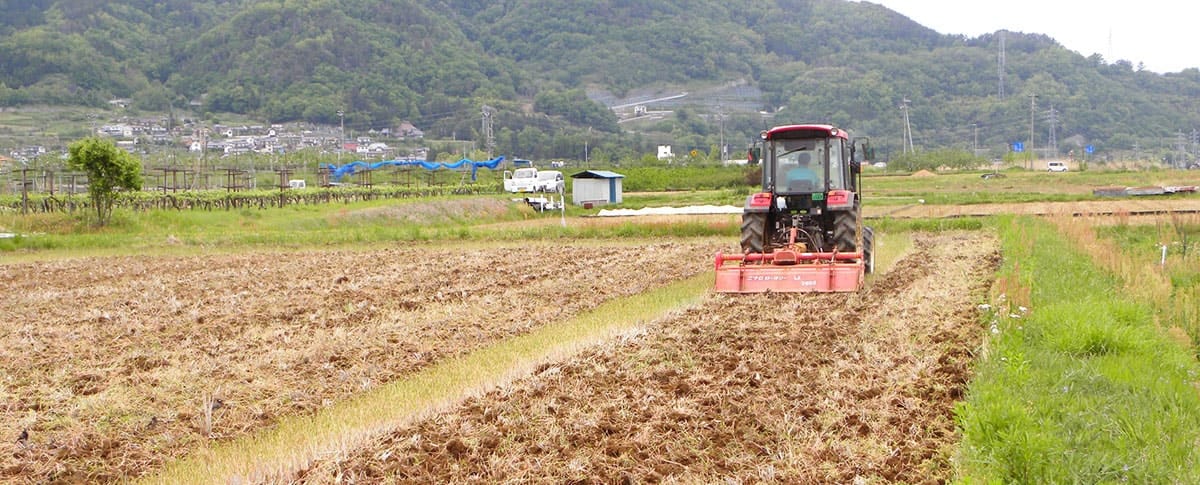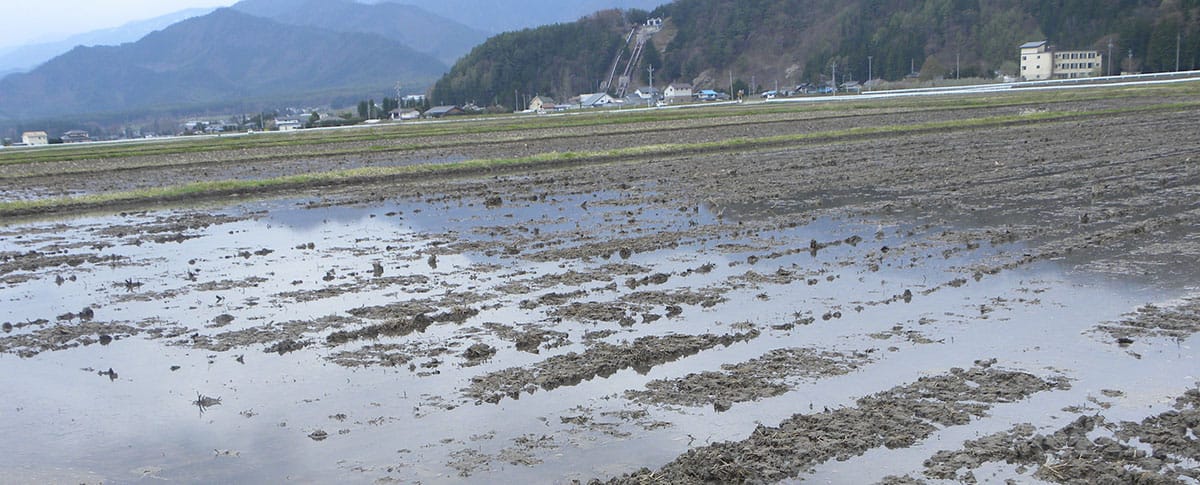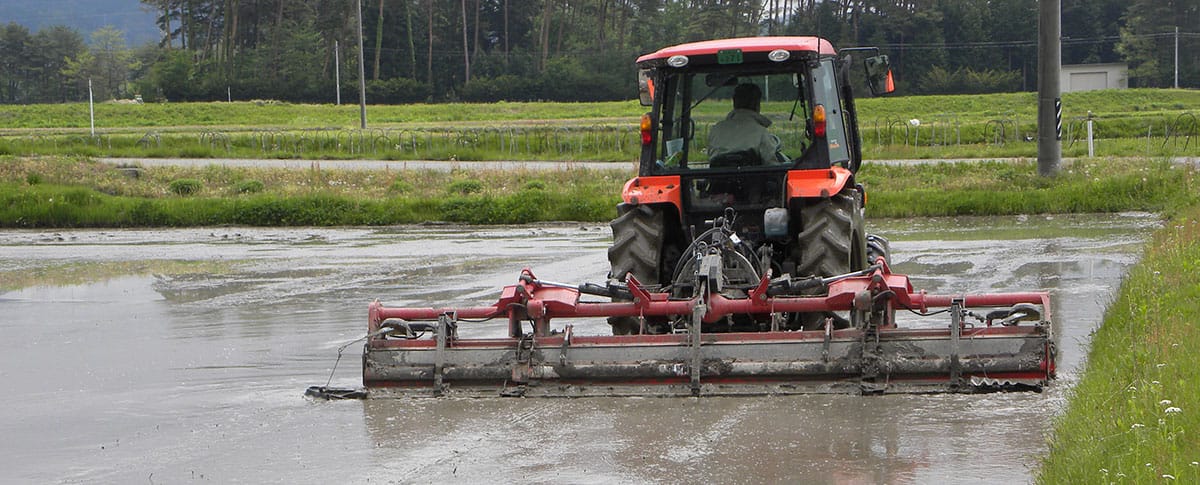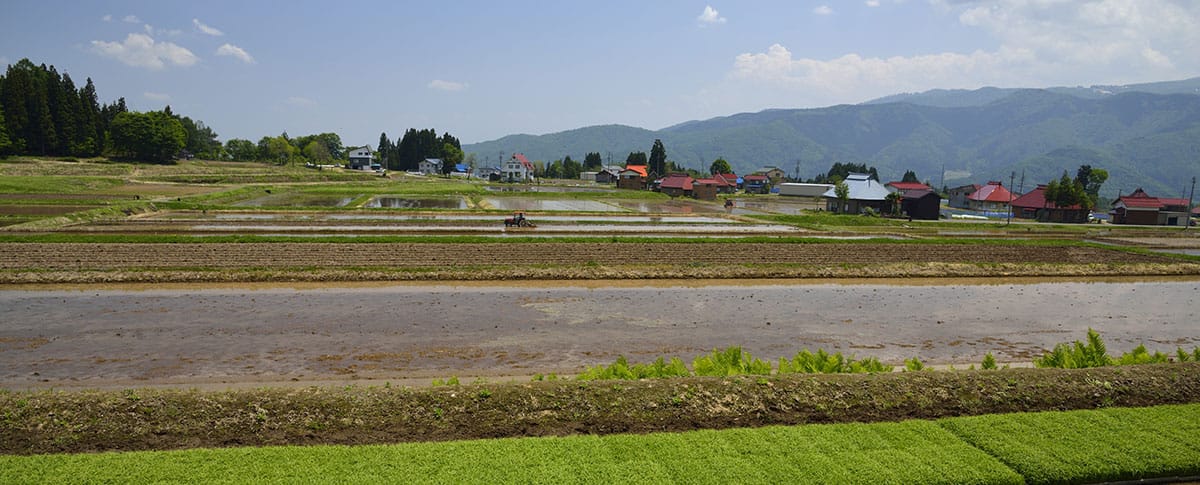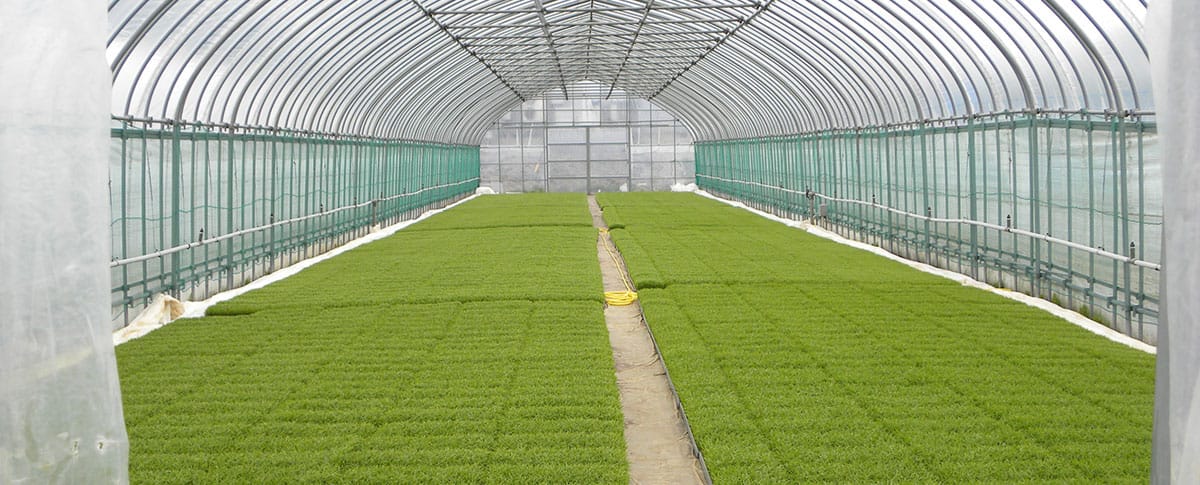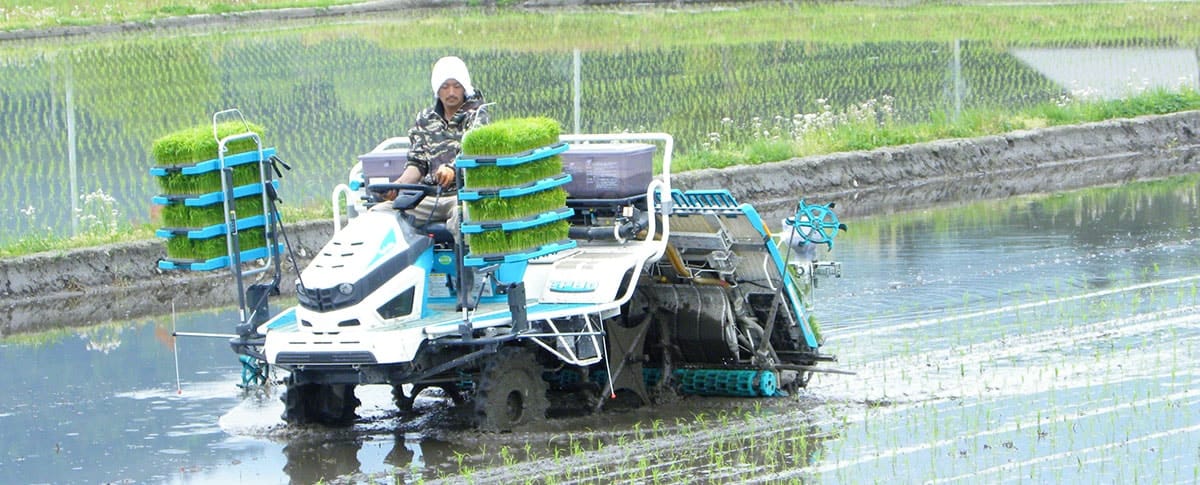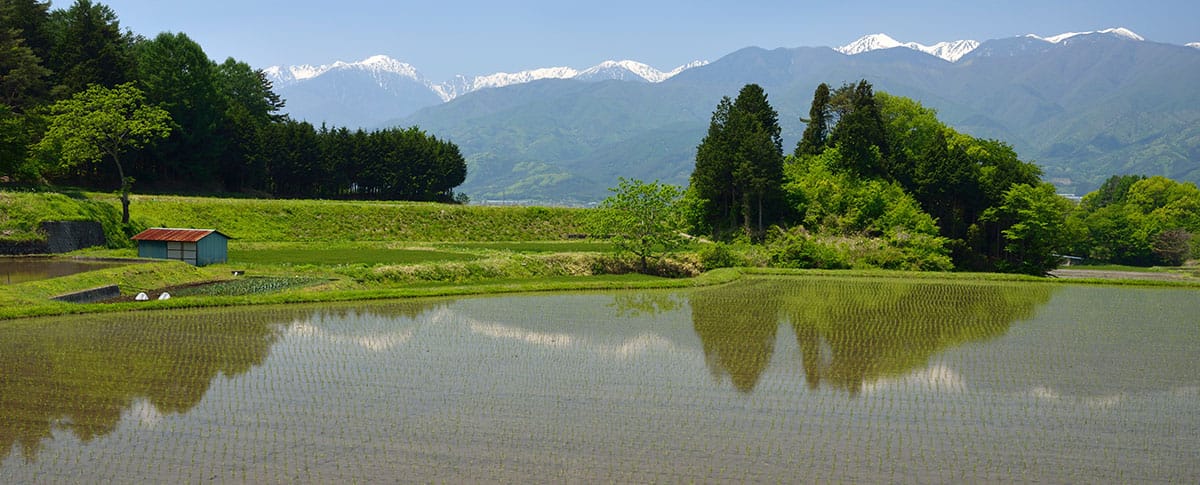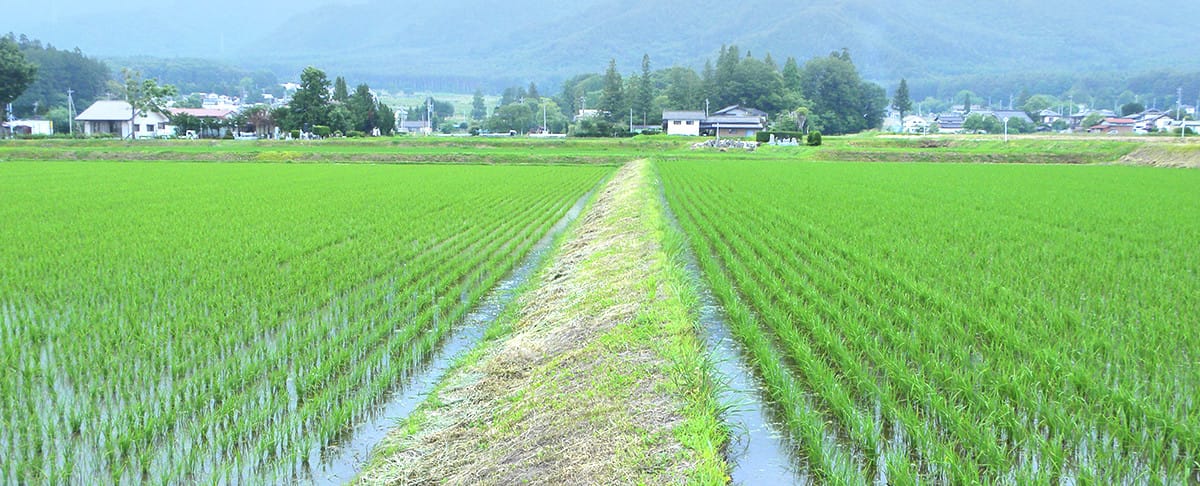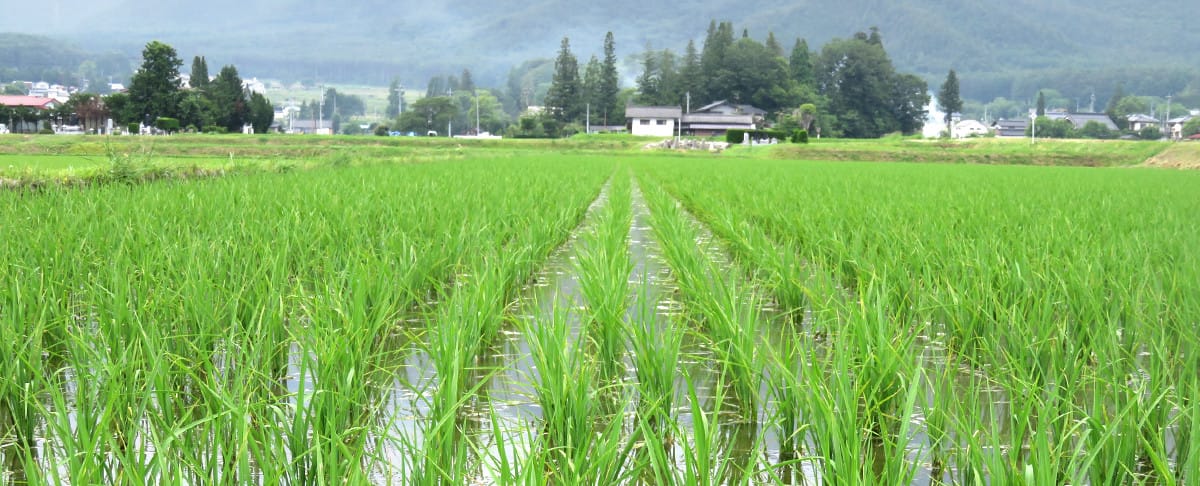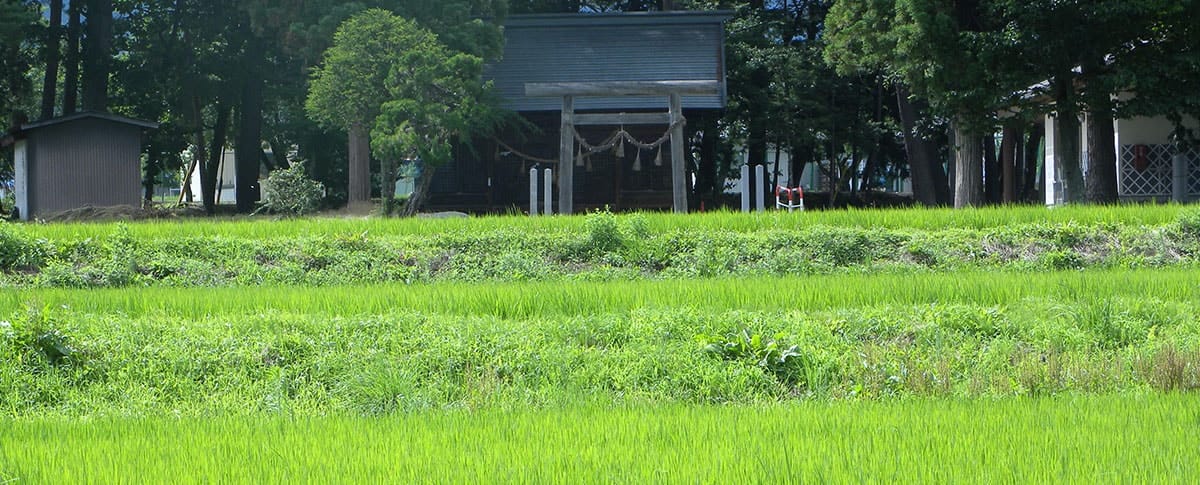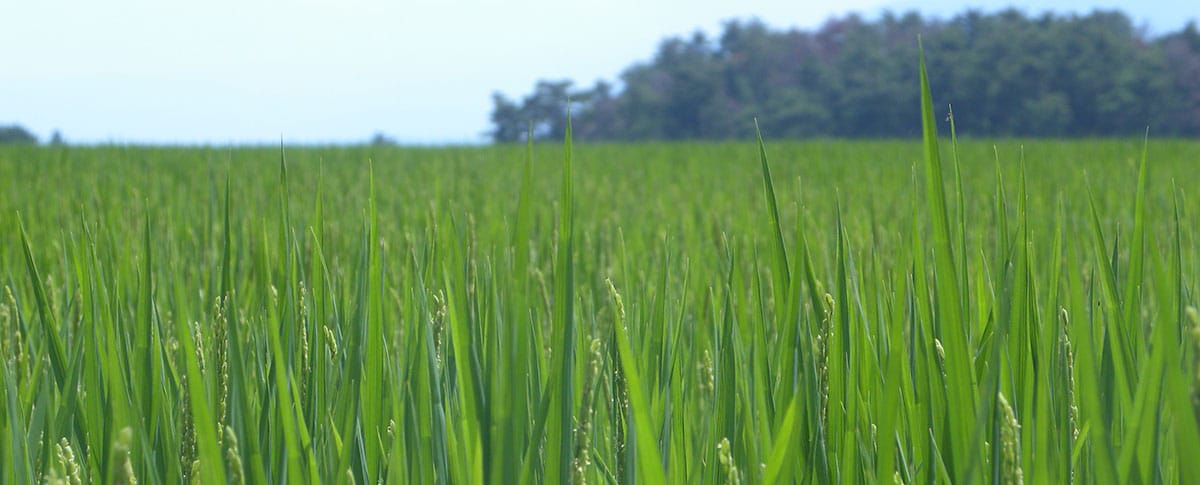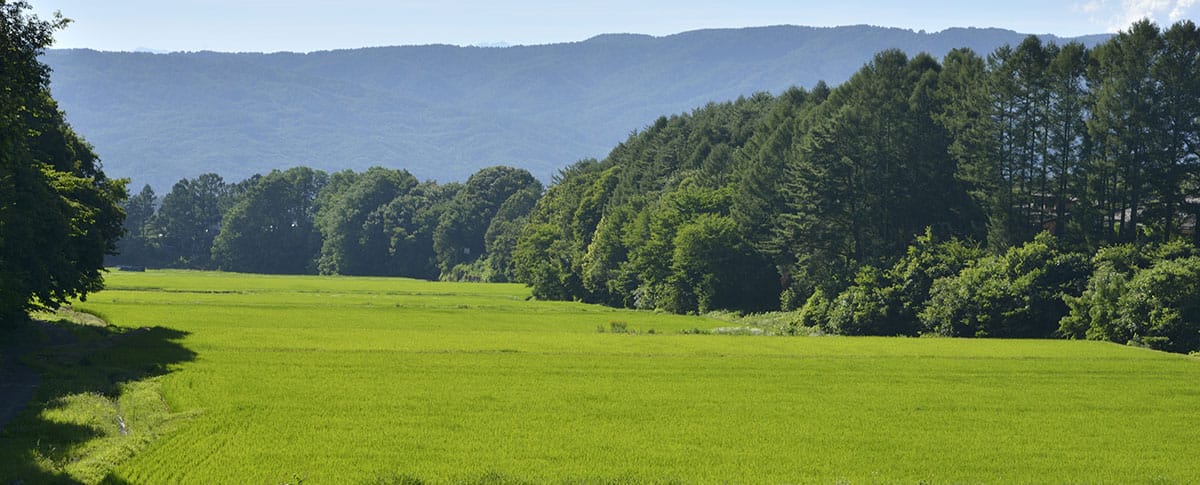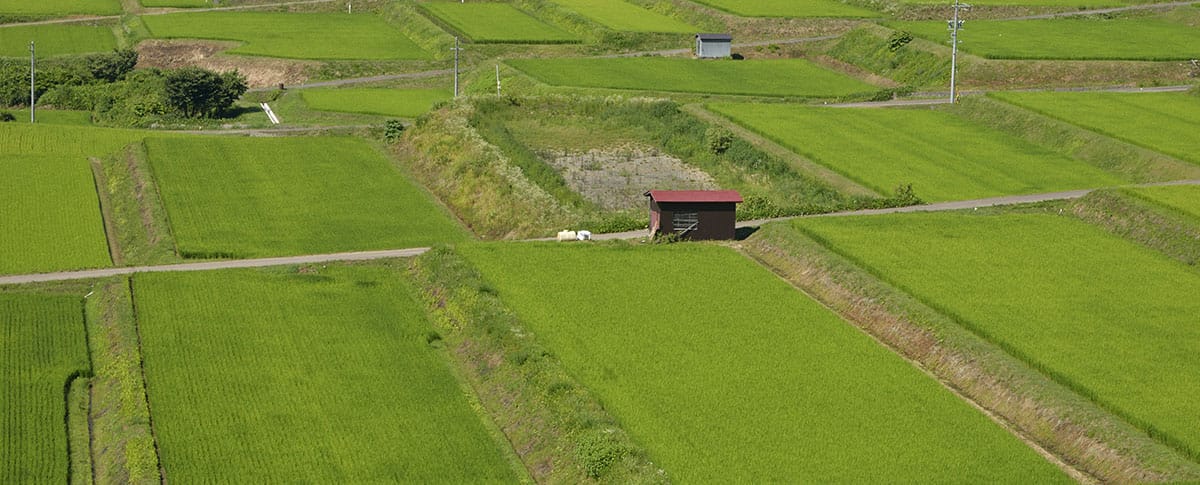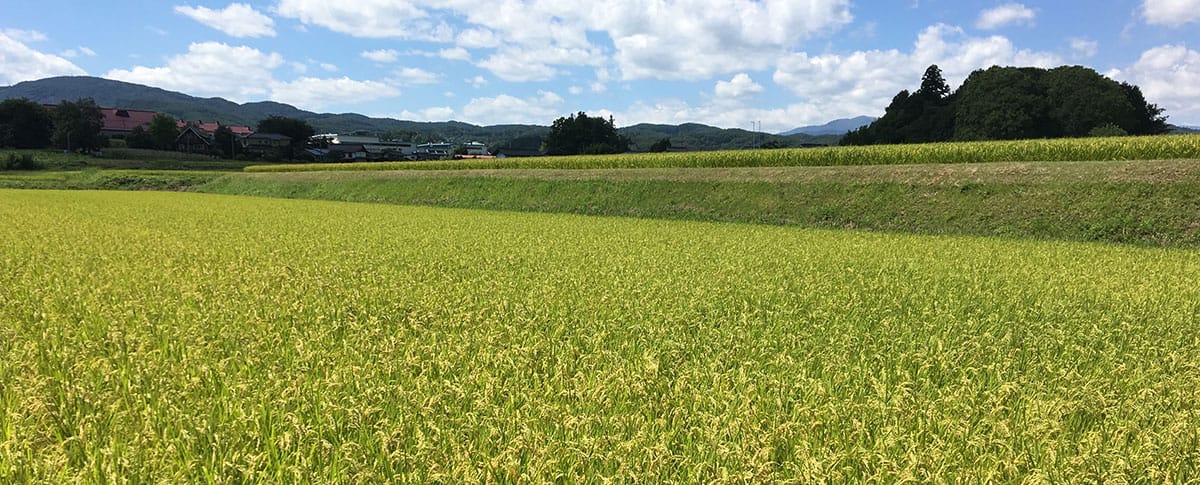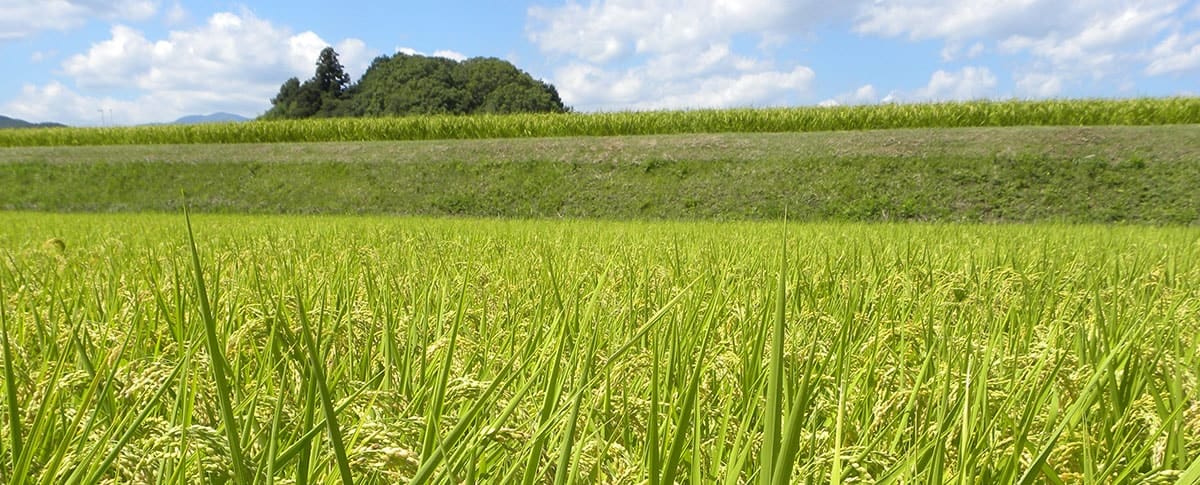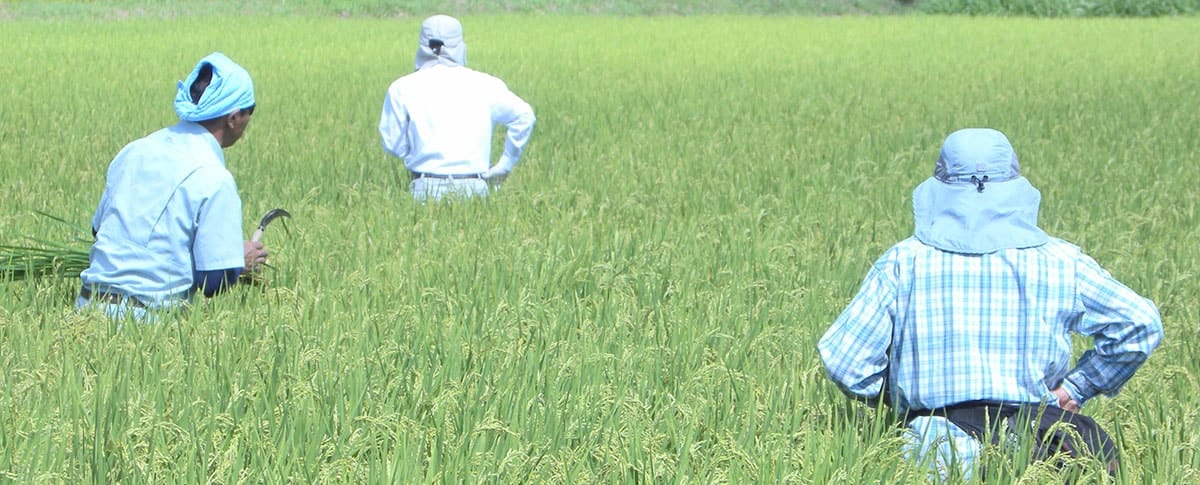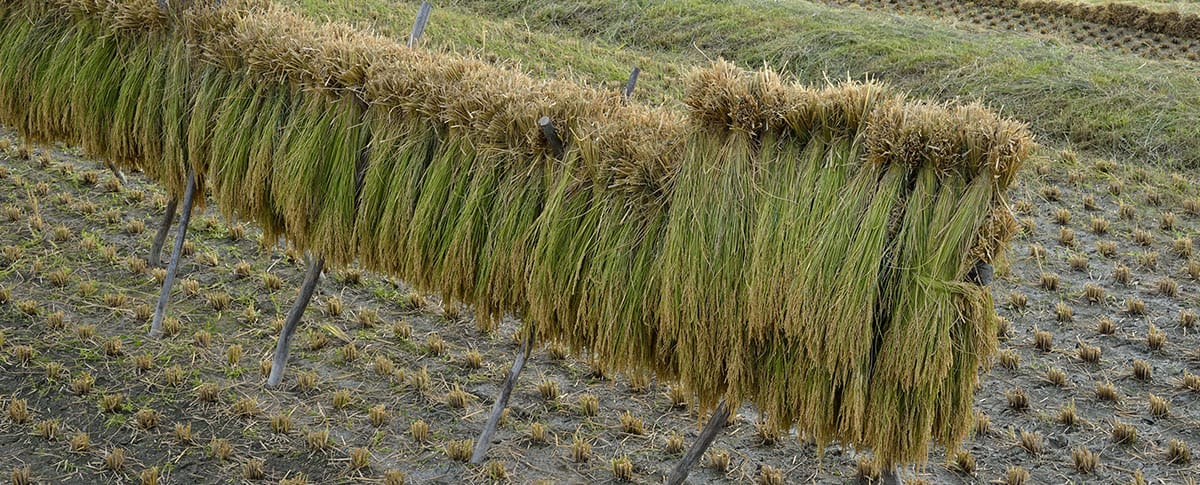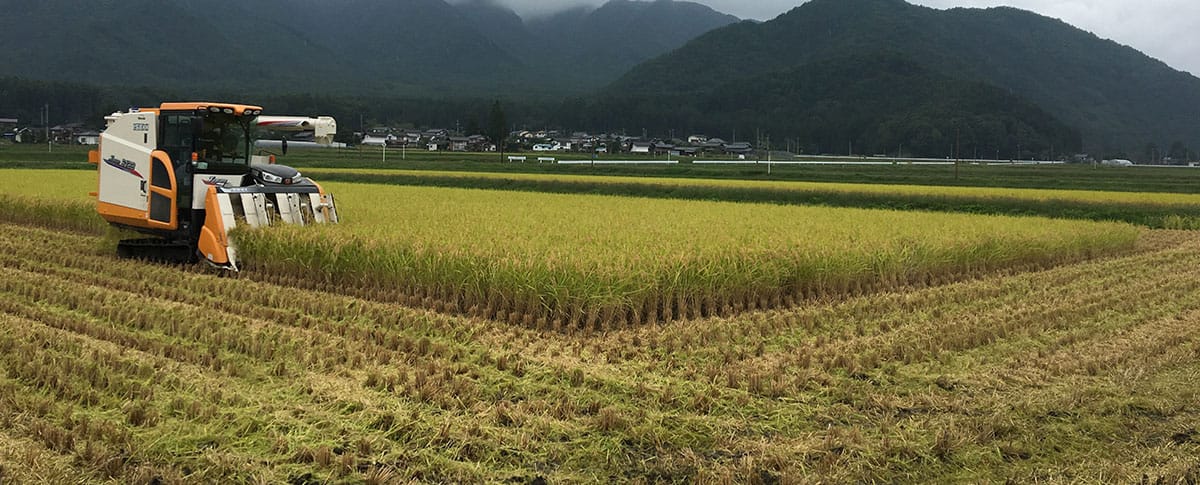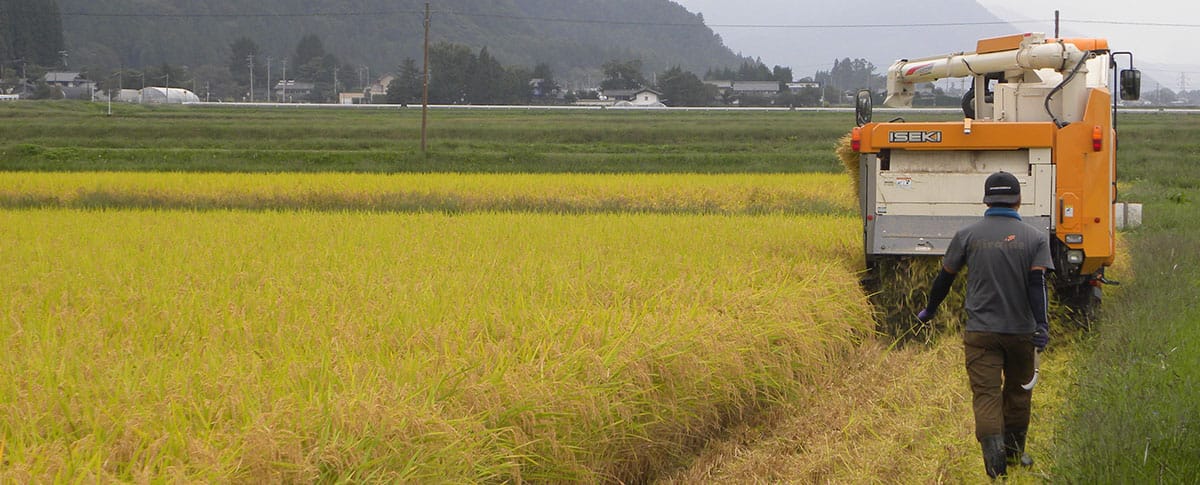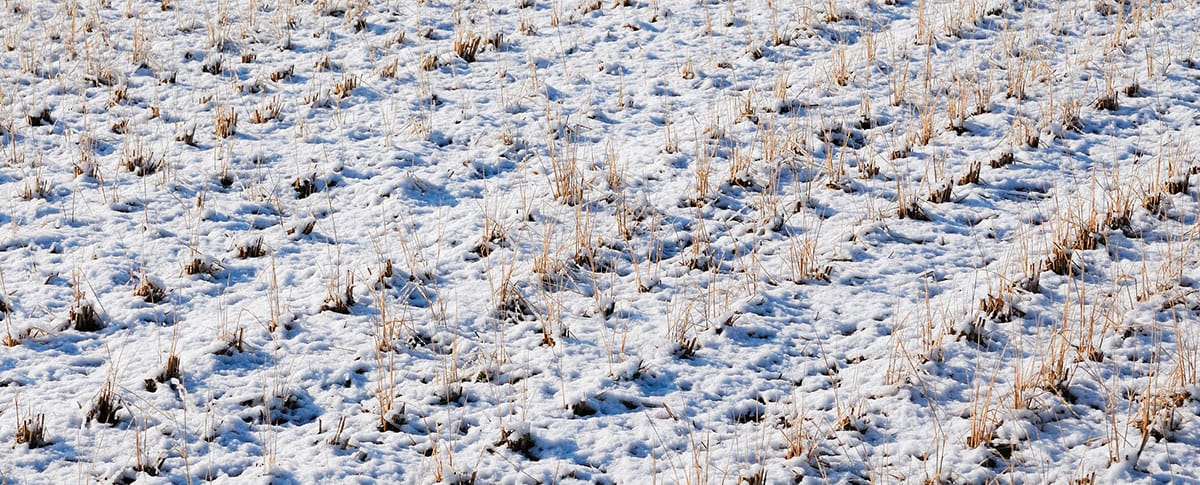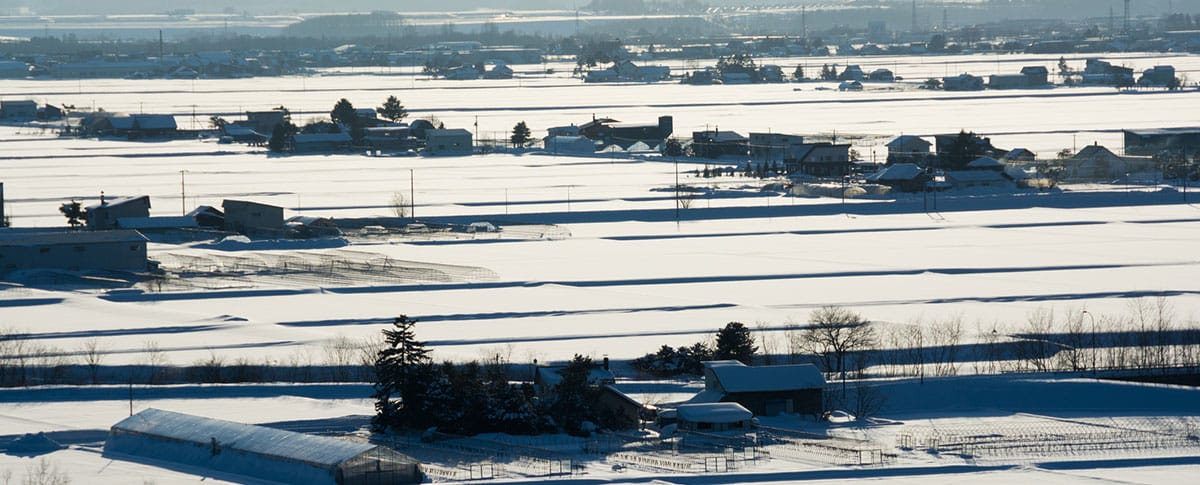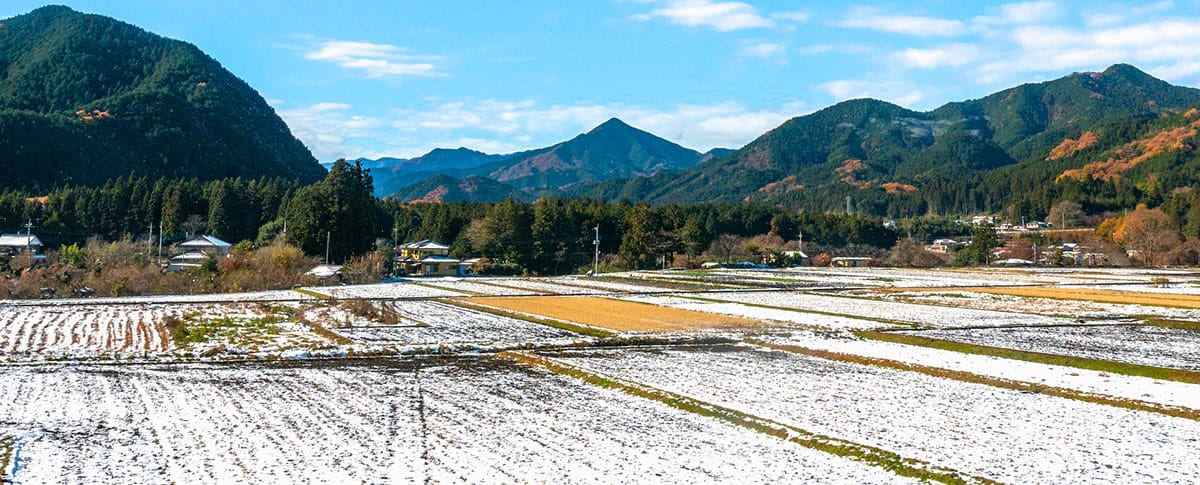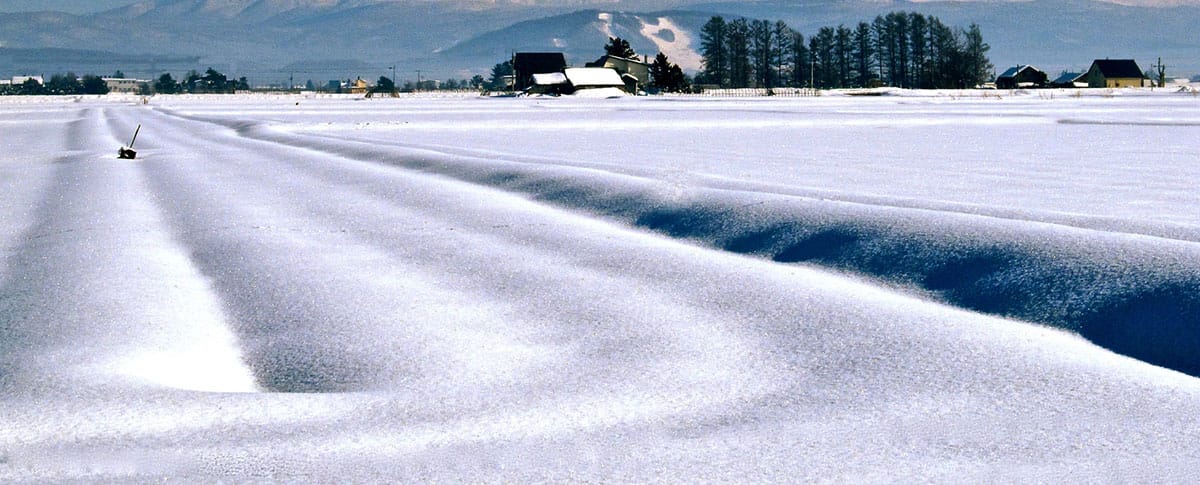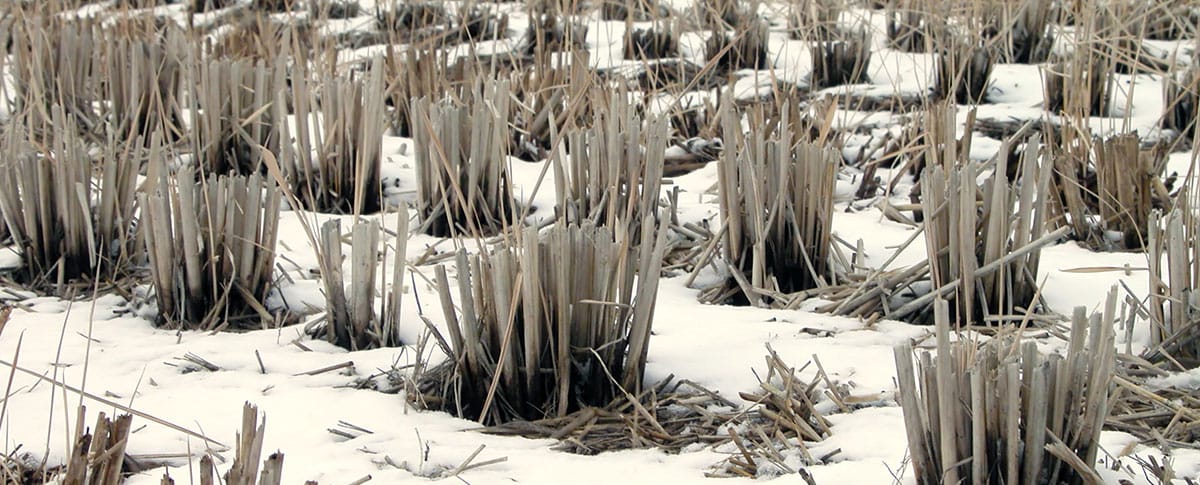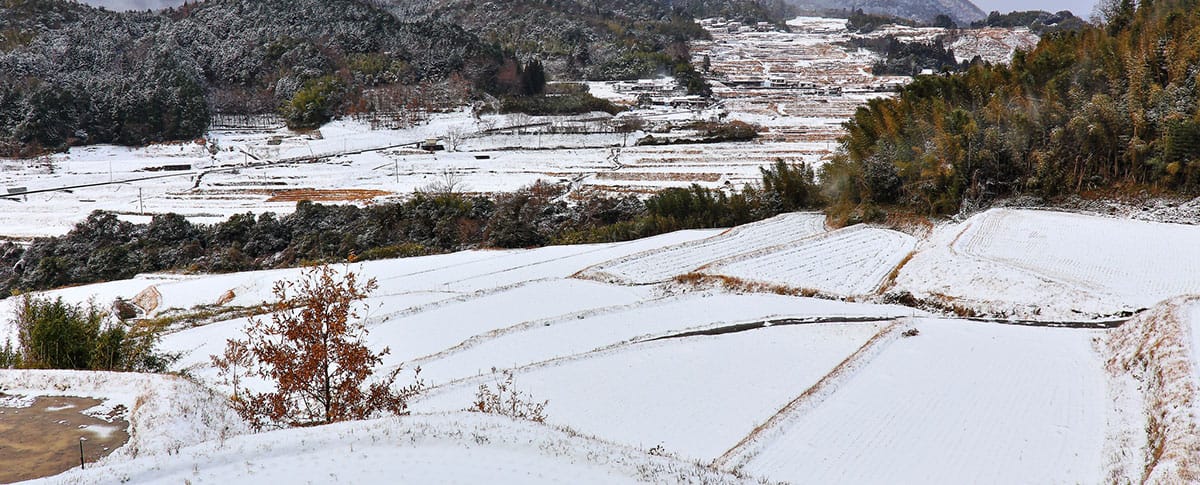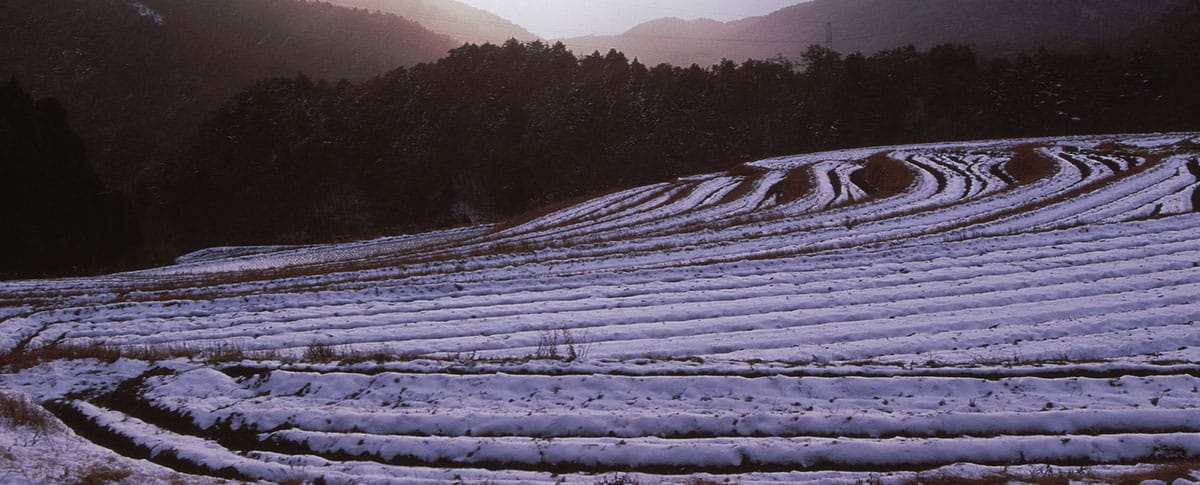The main form of rice cultivation in Japan is through growing it in paddies. In Japan, which has many mountainous regions and few plains, rice farmers also take advantage of small, terraced paddies built into the inclines of mountains. Unlike the large-scale rice cultivation in the West, where the seeds are directly sown into the soil, the main method in Japan is to plant seedlings in the paddies. From paddy-planting in spring to harvest in the autumn, the rice plants are carefully looked after, with painstaking management of the water and fertilizer, weeding, and so on.
When spring draws near, farmers plough and irrigate
the paddies to prepare them for planting. At the same time,
cultivation of the seedlings to be planted in the paddies begins.
After the seedlings have been grown in a plastic greenhouse,
they are transplanted to the muddy soil of the paddy.
The seedlings begin to grow into young rice plants.
They separate into stalks at the root, and the base of
the root grows large and round. One day during the summer,
small white flowers will appear, blossoming for around one hour.
Once pollinated, the flowers will close, and over the course of 40 days,
create seeds – rice.
When autumn is near, the ears of the rice plants
in the drained paddies gradually store nutrients in their seeds.
Close to harvesting time, the ears hang heavy under the weight
of the rice in the husk. The harvest begins when the golden
ears of rice bend over in the autumn breeze.
After the rice has been harvested, the paddies are sometimes
used for off-season crops such as barley or vegetables until the spring.
In snowy areas, the paddies are left fallow until spring.
As the snow falls and piles up, the paddies wait for the coming season.
Paddies are where rice, Japan’s staple food, is grown. The total area of rice-growing paddies in Japan comes to 2,446,000 hectares (Ministry of Agriculture, Forestry and Fisheries, FY2015), producing approximately 7,440,000 tons of rice (MAFF, FY2015). Due to increases in the amount of abandoned agricultural land and the diversification of food, the total area of rice paddies and the production of rice continues to decrease, but Japan still maintains a 100% self-sufficiency rate of rice.
Rice has been grown in paddies all across Japan since long, long ago. Scenes of orderly rows of young rice plants, turning into bowing, golden ears of rice in the autumn, could be called the primal landscape of Japan, surely evoking feelings of nostalgia in most Japanese people. These bountiful rice paddies are places where the people who live nearby connect and share in the joy of the harvest, and where a rich variety of cultures, traditions, and customs are born.
A rich variety of animals and plants, such as micro-organisms, pond snails, crayfish, fish, dragonflies, and frogs, live in the rice paddies. Around irrigation time every year, the frogs that matured there the previous year return and wait to spawn. The excrement of the creatures living in the paddies becomes fertilizer for the rice plants, helping the plants to grow quickly and healthily. The rice plants in turn consume airborne carbon dioxide, providing oxygen. The irrigated rice paddies are home to a diverse ecosystem where a many different living things support each other.
The paddies, which produce bountiful crops every year, also protect the environment. Rice paddies serve as reservoirs to take in heavy rainfall and slowly release it. Their ability to hold water stabilizes the flows of rivers, and prevents soil run-off. The paddies are also home to various forms of life that keep the water clean. The large numbers of rice plants in the paddies consume carbon dioxide, helping to mitigate global warming. Furthermore, when the water in rice paddies evaporates, it takes heat from the atmosphere, reducing increases in atmospheric temperature.










